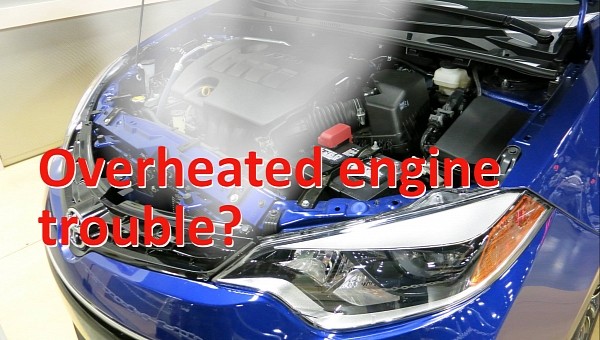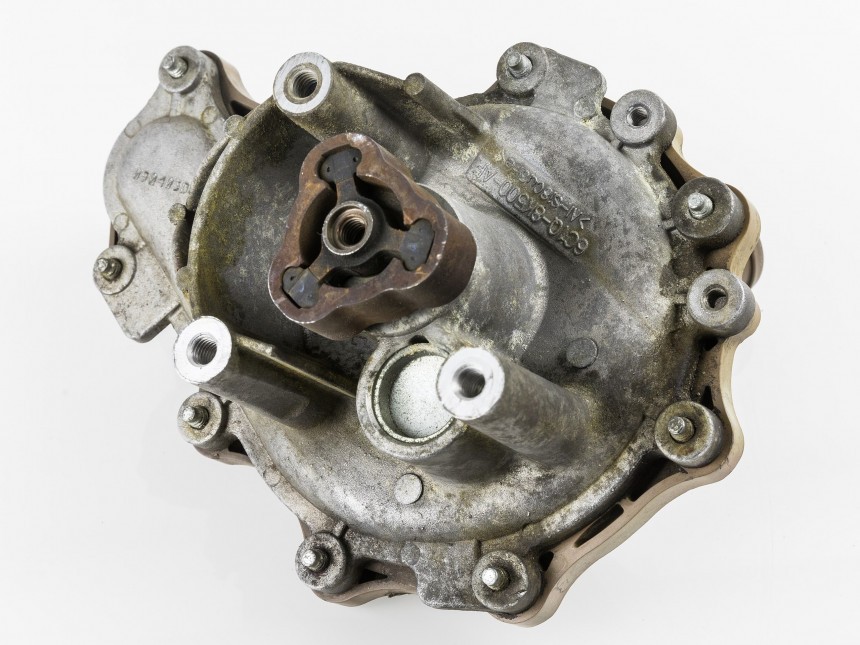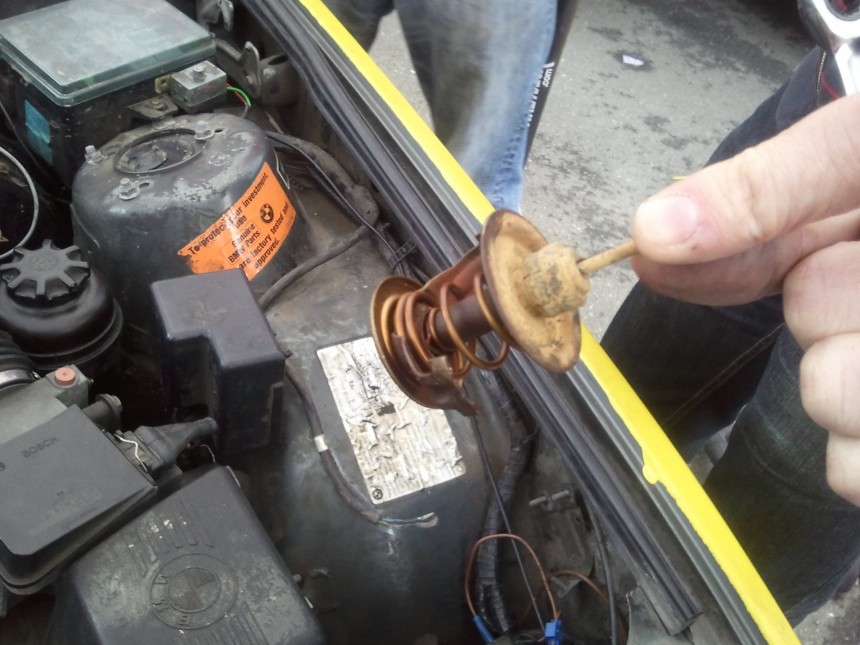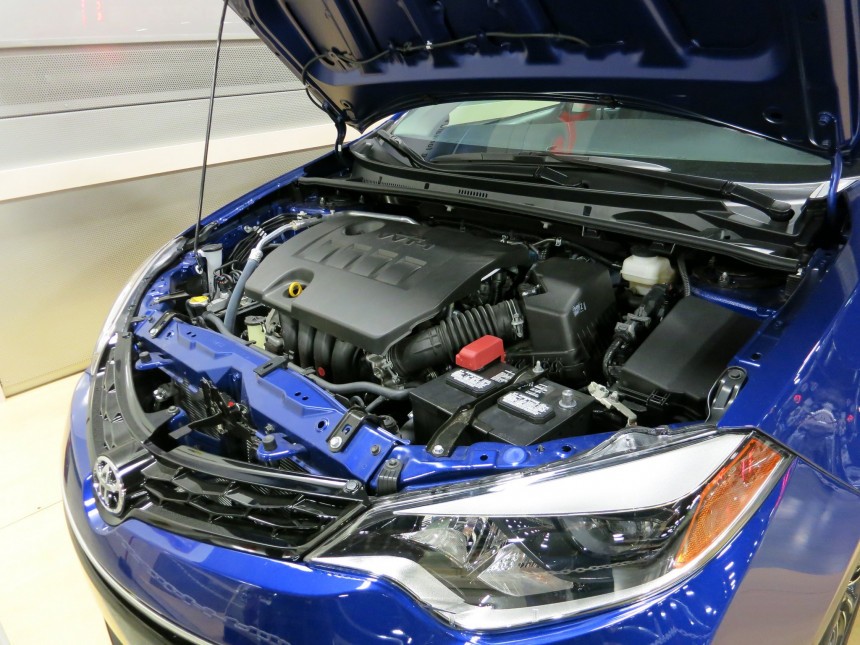If you just bought an old, beaten-up Corolla, you might end up stranded on the side of the road with a lot of steam coming from the engine bay and some spills on the ground. Just don't panic, and here's what you must do.
While during warranty years, owners are most likely to keep track of servicing their vehicles, they become less focused on that after it expires. Some people just sell these new cars after two or three years. Maybe the new owner will take care of the vehicle or not. But as time goes by and the car trades hands, the maintenance schedule is often forgotten.
For example, some owners asked me if driving their vehicles with four-year-old oil in the engine is OK. So, if they didn't care about lubricant, what are the chances that they flushed the coolant every two years or 30,000 miles (around 50,000 km)? I'd say that's almost none. I've asked them if they replaced that, and they looked stunned: "Wait, what? Do I have to change that too?"
In such situations, even the most reliable engines will fail, so don't be surprised if you see a Corolla with the hood open on the side of the road and a white cloud surrounding it. Of course, it might as well be any other make or model, but I chose this one since they are famous for doing that. But not because they are bad engineered. But usually, their owners think, "this is reliable; I don't have to do anything," which is wrong, even if they're not racing the car.
First, you have to turn off the AC and turn on the heater. If it's a dial, turn it all the way to the red area, which means hot. If it's digital, push the buttons until the HVAC's LCD shows "MAX." It doesn't matter if it's boiling hot outside. Under the hood is way more than that. Also, turn the fan speed to maximum. If you want to feel a little less uncomfortable, put it to heat the windshield and open all the windows.
Don't stop the car. Try to move steadily in the highest gear, and keep the engine under 2000 rpm. Do not pop the hood to allow more fresh air inside the engine bay. This can lead to accidents when the locking mechanism fails and slam the hood onto the windscreen. Remember: it's a windshield, not a hoodshield. This procedure should help to cool the engine.
If the temperature keeps rising, pull on the side of the road while keeping the heater on, and pop the hood. Do not stop the engine since that will bring the hottest air into the cylinder head, creating more trouble. Turn it off only if the coolant temperature needle doesn't come down.
Leave the hood open, stop the engine, and wait for about half an hour. Then you can check the cooling installation. First, you have to see if there is enough coolant. For that, you can look for the expansion tank. It has markings with "Min" and "Max," and the liquid should be between those lines. If it's below (most likely), you must add some. If you don't have any extra cooling liquid in the trunk, you may add still water. But remember that this will only work for a short time. Your next stop should be at a service station.
Also, you may check if there is still some liquid in the radiator. Here is the tricky part. Do not completely open the radiator's cap if the engine is hot. The pressure inside it will make the boiling-hot coolant spill everywhere and burn everything: hands, eyes, and skin included. To open the cap, use a rag, press it firmly, and slowly turn it anti-clockwise (to the left).
If you see steam coming out from underneath it, you should tighten it back and wait. Or, if you are skilled, you can leave that steam going out slowly, thus releasing the pressure. But usually, it can still burn your skin. So ONLY, I repeat: ONLY if you really know how to do that.
With the cap removed, look inside the radiator. If there is coolant there, you can put the cap back and drive to the next service station while keeping the heater on and constantly checking the temp gauge.
That's why you should check the cooling system and flush it every other two years. Also, remember to constantly look underneath the car and see if there are any leaks underneath it. With correct maintenance, a Toyota may pass the half-of-million mile mark with no troubles. But no engine is bulletproof if the owner neglects it.
For example, some owners asked me if driving their vehicles with four-year-old oil in the engine is OK. So, if they didn't care about lubricant, what are the chances that they flushed the coolant every two years or 30,000 miles (around 50,000 km)? I'd say that's almost none. I've asked them if they replaced that, and they looked stunned: "Wait, what? Do I have to change that too?"
In such situations, even the most reliable engines will fail, so don't be surprised if you see a Corolla with the hood open on the side of the road and a white cloud surrounding it. Of course, it might as well be any other make or model, but I chose this one since they are famous for doing that. But not because they are bad engineered. But usually, their owners think, "this is reliable; I don't have to do anything," which is wrong, even if they're not racing the car.
If it happens, here's what you have to do
If you just bought the vehicle and didn't have time to flush all the fluids, you might find yourself in that scenario. But don't think that this may happen all at once. The car will give you a few warning signs. So, if you know that the service history is as clear as what's in Area 51, then regularly check the coolant temperature gauge on the instrument cluster. Fortunately, all Corollas have one fitted as standard. If the needle starts its journey higher than the middle section, be cautious. If it reaches the upper quarter, then you're in trouble. But not in big ones, yet.First, you have to turn off the AC and turn on the heater. If it's a dial, turn it all the way to the red area, which means hot. If it's digital, push the buttons until the HVAC's LCD shows "MAX." It doesn't matter if it's boiling hot outside. Under the hood is way more than that. Also, turn the fan speed to maximum. If you want to feel a little less uncomfortable, put it to heat the windshield and open all the windows.
Don't stop the car. Try to move steadily in the highest gear, and keep the engine under 2000 rpm. Do not pop the hood to allow more fresh air inside the engine bay. This can lead to accidents when the locking mechanism fails and slam the hood onto the windscreen. Remember: it's a windshield, not a hoodshield. This procedure should help to cool the engine.
Leave the hood open, stop the engine, and wait for about half an hour. Then you can check the cooling installation. First, you have to see if there is enough coolant. For that, you can look for the expansion tank. It has markings with "Min" and "Max," and the liquid should be between those lines. If it's below (most likely), you must add some. If you don't have any extra cooling liquid in the trunk, you may add still water. But remember that this will only work for a short time. Your next stop should be at a service station.
Also, you may check if there is still some liquid in the radiator. Here is the tricky part. Do not completely open the radiator's cap if the engine is hot. The pressure inside it will make the boiling-hot coolant spill everywhere and burn everything: hands, eyes, and skin included. To open the cap, use a rag, press it firmly, and slowly turn it anti-clockwise (to the left).
If you see steam coming out from underneath it, you should tighten it back and wait. Or, if you are skilled, you can leave that steam going out slowly, thus releasing the pressure. But usually, it can still burn your skin. So ONLY, I repeat: ONLY if you really know how to do that.
Reasons for boiling
There are many reasons for overheating. One of the culprits might be the radiator's fan. If that doesn't turn on when needed, then the engine will get hot. Also, bad maintenance leads to water pump failure and a clogged radiator. Thus, the cooling system cannot do its job. A faulty thermostat that doesn't open or just barely opens can lead to this situation. Last but not least, a head gasket or a cylinder head problem can lead to that problem too.That's why you should check the cooling system and flush it every other two years. Also, remember to constantly look underneath the car and see if there are any leaks underneath it. With correct maintenance, a Toyota may pass the half-of-million mile mark with no troubles. But no engine is bulletproof if the owner neglects it.










